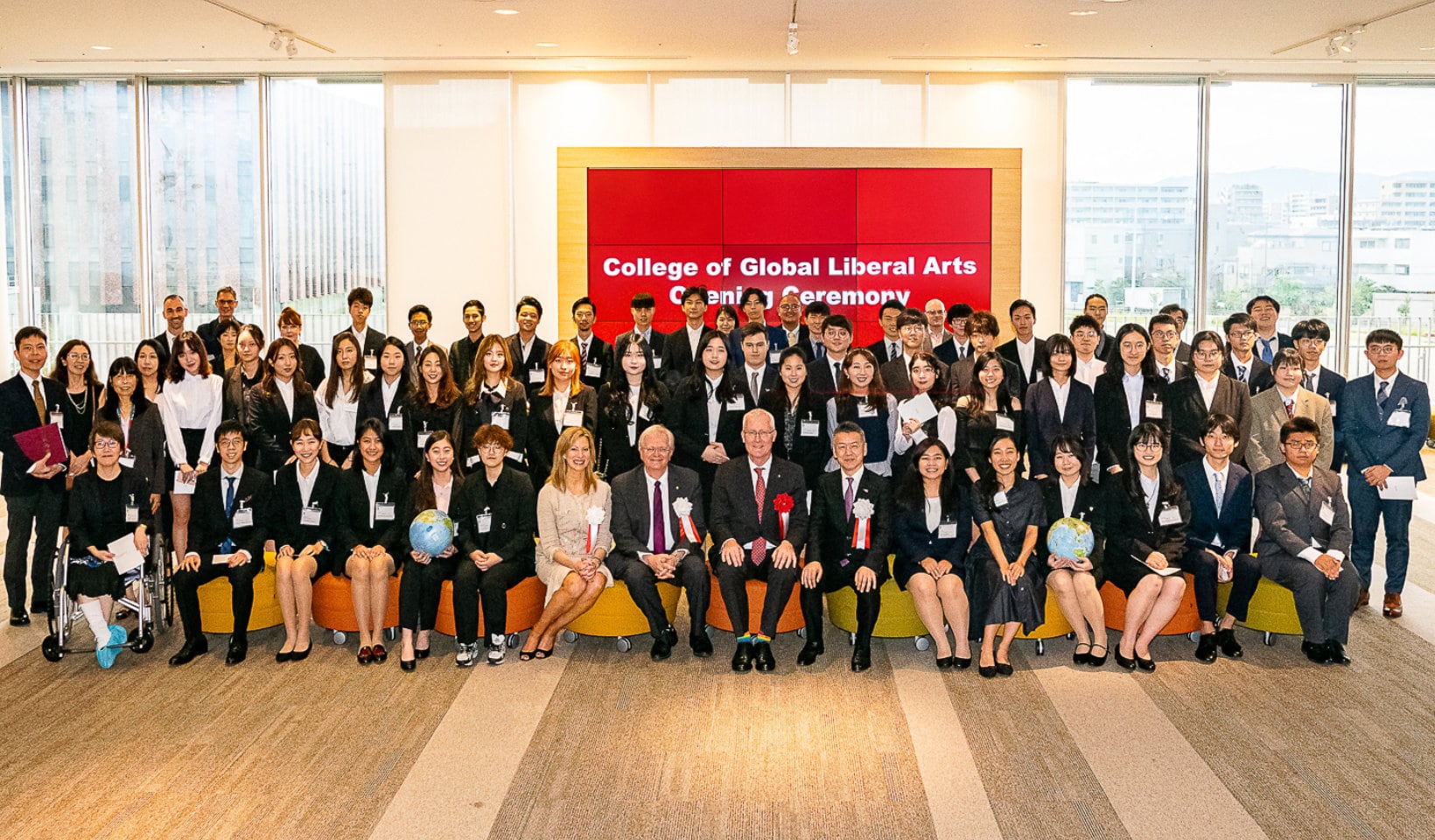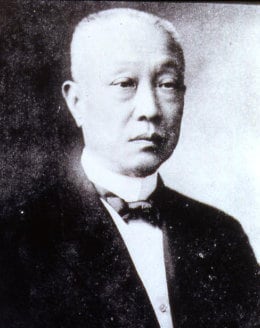
Ritsumeikan’s initiative in the age of the fourth industrial revolution
The global network of information technology-driven media is producing a massive amount of data at an extraordinarily swift pace and comprehensive coverage, densely connecting and interlacing every region of the world today. The sheer quantity of knowledge and information produced is unprecedented in its scale, and with this, humankind is facing more complexities and uncertainties, as well as an existential challenge: what does it mean to be human in a world such as this – a world experiencing the fourth industrial revolution? How can higher education respond to and evolve from an institution which was originally designed to meet the needs of previous era of mass production? What is the role and responsibility of higher education today?
“What is the role and responsibility of higher education today?”
Ritsumeikan’s answer is the establishment of the College of Global Liberal Arts. What a well-rounded individual should earn and handle is not about the amount of particular knowledge in memory but about the most fundamental humanely intellectual skill that sustains us to question, explore, and perceive what to learn, how to learn, where to learn, when to learn, and most importantly, why to learn. This must be the essential beginning of nurturing another level of human intelligence. Ritsumeikan University’s response to the age of fourth industrial revolution is the reinterpretation of classic forms of liberal arts learning in the context of the Age of the Asian Century.
The fit between Ritsumeikan tradition and liberal arts education

With its roots in Prince Kinmochi Saionji’s initiative in Meiji period Japan to adapt higher education to global standards, the private academy “Ritsumeikan” was founded on the site of the Kyoto Imperial Palace in 1869. Based on the vision of Freedom and Innovation, and in reflecting on Japan’s wartime memory, the educational philosophy of Peace and Democracy, this traditional Japanese institution resonates with the tradition of the idea of liberal arts. The idea of liberal arts originated in the Greek and Roman empires, which later took the form of “seven liberal arts (septem artes liberales).” It then became the basis for studies in medieval European universities that cultivated future leaders.
Fused with founder Saionji’s vision to cultivate future leaders, this concept of “seven liberal arts,” especially the Trivium (Grammar, Dialectic, and Rhetoric) is inherited to the foundation of Ritsumeikan’s Global Liberal Arts today.
What is Global Liberal Arts?
The conceptual foundation of Ritsumeikan’s Global Liberal Arts (GLA) as a liberal arts education is built upon the structure and contents of the Trivium; Grammar, Dialectic, and Rhetoric. In the classic liberal arts, it presents the three essential arts of language pertaining to the mind, and GLA redefines them as the core intellectual and global “literacies” of this century and produces three vital realms of interdisciplinary learning: Cosmopolitan Studies, Civilization Studies, and Innovation Studies.
Cosmopolitan studies engage with the art of inventing and combining global knowledge and values, and Grammar in the Trivium should be conceptually compatible with them. Civilization studies involve the art of logical and critical reasoning, and analytical thinking of humanity and its institutions, artefacts, and heritage of the past and the present. Dialectic, the art of thinking, in the Trivium, should correlate to them. Innovation studies are linked with the art of communication, and Rhetoric in the Trivium equals to them from the conceptual perspective.
The art of communication has been one of the most drastically transformed areas of human capabilities per technological advancement. During the past several decades, the humankind has experienced unprecedented progress of information and communication technology, which has shaped a global-scale knowledge economy. Human knowledge and knowledge management form the nucleus of every new value creation via more advanced communication; the concept and praxis of Rhetoric in the Trivium well reflects the unchanging nature of innovation of the past, the present, and the future.
The Quadrivium
GLA made a strategic replacement of the Quadrivium in the classic liberal arts education, viz. Arithmetic, Music, Geometry, and Astronomy, with the subjects in three study streams such as programming and cultural studies (Arithmetic and Music), design management, world history, and knowledge and innovation (Geometry), and science basics (Astronomy). This “strategic shift and rebalancing” is an essential method for GLA not only to overcome the inevitable technical outdatedness of the classic Quadrivium but also to sustain GLA’s foundational character of focusing upon humanity studies and social science in the Asian Century.
Japanese studies cluster
GLA also has another distinct structural uniqueness; the Japanese studies cluster intertwine the three streams of liberal arts learning (Cosmopolitan, Civilization, and Innovation). The GLA “Trivium” is therefore backboned by the Japanese studies cluster, including the linguistic, historical, socio-cultural, and political subjects. This is founded on the necessity to rethink liberal arts from multiple Asian sites and perspectives to cultivate critical thinking and intellectual tolerance and embracing of diversity and difference.
Globalizing liberal arts in Asia, from Asia(s)


The evolution of higher education and its path has never been linear. The very concept of college can be found in 13th Century Europe, a mobile community of professors and students that sought knowledge which anchored itself on the two kinds of freedom: freedom of movement and freedom of thought. Subsequently, in exchange for financial stability, the college becomes tied to the nation-state, as well as to imperialism, thereby compromising its freedom of mobility to the idea of the nation-state and empire. Western knowledge production and the expansion of the West are therefore intrinsically intertwined. This means that mere transplanting of Western liberal arts learning to Asian context will not suffice: it must be critically challenged and transformed from Asia.
“We aspire to produce global citizens that can think beyond borders”
As a university with the history of offering refuge to intellectuals who refused to succumb to collaborating with Japan’s own imperialism, the College of Global Liberal Arts endeavors to work in partnership with the Coral Bell School of Asia Pacific Affairs at the Australian National University to carve out new space to reassert freedom of thought and freedom of mobility, to rethink liberal arts from multiple Asia(s) – from Osaka and Canberra. The GLA Trivium will provide every student with global knowledge and intellectual foundations to prepare herself / himself for thriving in the age of the fourth industrial revolution. The spirit of a liberal arts education remains there. We aspire to produce global citizens who can think beyond borders, who acknowledge the legacy of the past as well as envision a global existence and creative coexistence.